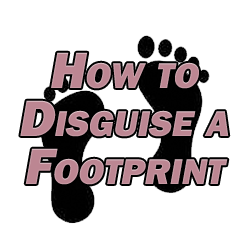For our purposes, a footprint is really just anything which identifies a site in some way. Footprints can be used for scraping purposes, like finding backlinks or any other text on a web page so you can find similar sites. In terms of SEO, it’s essential that you know how to disguise a footprint.
How to Disguise a Footprint
This is great for finding sites to comment on or, if you get imaginative, really any other type of content. Footprints can also connect your sites together in Google’s eyes, compromising a private blog network and rendering it much less effective. I’ll cover specifically the kinds of footprints you want to avoid leaving between your sites to get the most out of your private blog network.
Vary the IPs – Having all of your websites which link to each other but are meant to look like they have nothing to do with each other otherwise, having them all on the same hosting account is the fastest way to tell Google that you’re trying to game the system. And while they might not punish or penalize you, it’s just a part of their algorithm which appraises and grades link juice that.
Reseller hosting provides a low cost way to achieve vastly different IP addresses for each of your hosted domains but without having to break the bank. In fact, with a reseller hosting package you can pay just a bit more than you’d pay each month for a single IP while having dozens of unique IPs for your sites.
Vary the Hosting Provider – You can vary your IP with a reseller account, but all of your sites will still show as being on the same hosting provider. Have at least a second hosting provider you keep sites on to minimize your footprint here. I did a web hosting comparison to give you some ideas.
Varying the Extension – As I mentioned in my post on how to choose a domain name, .COMs are generally the most trusted extension and all things being equal will rank about a cheaper .INFO. That’s a good rule if you only have one site, but if you’re building a private blog network then you need plenty of varying extensions. Have some .COMs, some .INFOs, .NETs, .ORGs, etc.
Vary the CMS – WordPress is a CMS or content management system. You want each of your sites to be as diverse and different from one another as possible, and varying the makeup of each site is a great way to do that. Have some WordPress sites, some Drupal, some Joomla, even some HTML sites to hide your footprint further.
Private WHOIS Information – Every webmaster is required to disclose their personal information for every site which they purchase. This information includes their home address, phone number, name, basically the information you input when you register a new domain. This information is freely available for anyone looking for it via sites like Whois.
You can pay a fee each year with your registrar, typically just a few bucks, per domain to hide your information from everyone. This also means that Google can’t find your information. Unfortunately this is a necessity unless you want to create an immediate footprint to link all of your sites together, thus diminishing the link juice effect they’ll have to each other and making all of your work worthless.
For more information, check out how to get more out of private blog networks.
